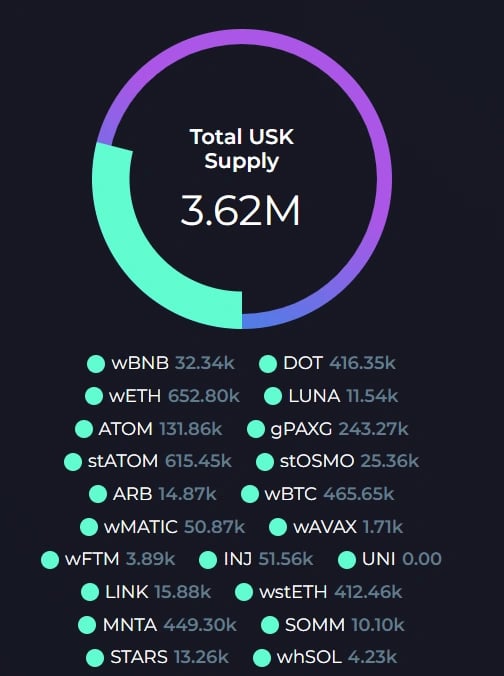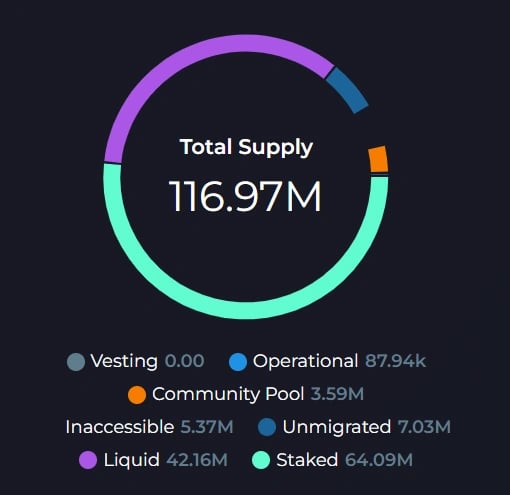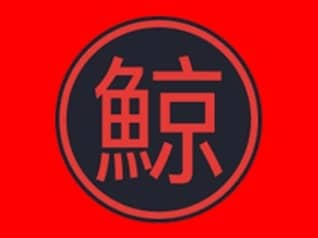위키 구독하기
Share wiki
Bookmark
Kujira
Kujira
**쿠지라(Kujira)**는 Slangdog, Dead Right Dove, 그리고 Codehans에 의해 설립된 탈중앙화 생태계입니다. 2021년 11월 20일에 출시된 쿠지라 네트워크는 프로토콜, 개발자 및 암호화폐 사용자를 위한 탈중앙화 애플리케이션(dApps) 개발에 중점을 두고 있으며, 탈중앙화 금융(DeFi) 내에서 효율적이고 안전하며 위험 없는 환경을 조성하는 것을 목표로 합니다. [1][2][3][4]
개요
쿠지라(Kujira)는 다양한 DeFi 인프라와 지속 가능한 핀테크 솔루션을 제공하는 레이어 1 블록체인으로, 광범위한 Web3 사용자를 대상으로 합니다. 코스모스 네트워크 기반으로 구축되어 코스모스의 모듈식 SDK를 기반 아키텍처로 활용하며, 여러 개의 기본적으로 내장된 dApp을 통합합니다. 쿠지라는 개발자는 자체 블록체인에서 개발하고, 검증자는 보안 및 분산화에 기여하며, 커뮤니티 구성원은 투표 및 기타 생태계 기능을 통해 거버넌스에 참여하는 등 다양한 방식으로 생태계 참여를 가능하게 합니다. 주목할 만한 dApp으로는 중앙 허브인 BLUE, 유동성 엔진인 BOW, DEX인 FIN, 머니 마켓인 GHOST, DeFi 청산인 ORCA, 크로스체인 스테이킹인 POD, 멀티체인 지갑인 SONAR, 스테이블코인인 USK가 있습니다. 네이티브 토큰인 KUJI는 수수료 지불, 스테이킹, 및 거버넌스 참여에 사용되며, 쿠지라 네트워크의 방향을 설정합니다. [5][6]
역사
2021년 11월 20일, 쿠지라(Kujira)는 테라(테라) 생태계 내에서 운영을 시작했습니다. 그러나 2022년 5월 테라 붕괴 이후 코스모스(코스모스) 생태계로의 전환을 발표했습니다. 이 중요한 사건은 쿠지라의 방향에 영향을 미쳐 전용 레이어 1 네트워크의 생성과 지속 가능한 DeFi (디파이) 생태계의 구축으로 이어졌습니다. 높은 인플레이션의 자체 토큰이 없음에도 불구하고 사용자에게 수익 창출 기회가 제공되었습니다. 2022년 7월, 쿠지라는 코스모스 생태계 내에서 설립되었으며, 합의에는 텐더민트 BFT(Tendermint BFT)를, 크로스체인 상호 운용성에는 IBC(Inter-Blockchain Communication) 프로토콜을, 모듈에는 코스모스(코스모스) SDK를 사용했습니다. 부수적인 스테이블코인(스테이블코인)인 USK는 2022년 8월에 출시되었습니다. [3][5][7][8]
테라에서 코스모스로의 전환에 대해 Dead Right Dove는 다음과 같이 말했습니다. [29]
"코스모스에서 사용 가능한 기능들이 확실히 승자라고 생각합니다." 그는 덧붙여 "IBC 토큰을 한 블록체인에서 다른 블록체인으로 브리지를 사용하지 않고 전송할 수 있다는 사실은 정말 중요한 일입니다. 코스모스는 실제로 많은 암호화폐 문제를 해결합니다."
특징
쿠지라(Kujira)는 다음을 포함한 다양한 기능을 제공합니다. [8]
- 수익 창출 제품: ORCA, FIN, BLUE, FINDER, USK 등의 에코시스템 제품군은 수익 창출에 대한 노력을 보여주며 네트워크의 가치 제안을 향상시킵니다.
- 스테이킹 및 크로스체인 기능: 쿠지라(Kujira)는 스테이크 기반 네트워크와 코스모스(Cosmos)의 IBC를 통한 원활한 크로스체인 상호 작용을 통해 사용자 참여를 장려합니다.
- 커뮤니티 거버넌스: 커뮤니티 투표를 거치는 에코시스템의 커뮤니티 중심 접근 방식은 품질 관리와 지속 가능성을 조성하는 데 도움이 됩니다.
- 효율성 및 네이티브 토큰 생성: 온체인 스케줄러와 네이티브 코스모스 토큰 생성은 네트워크 효율성에 기여하며, 간소화된 사용자 경험을 위해 계약 진입 지점을 단순화합니다.
- 강력한 오라클 및 난수성: 적극적으로 참여하는 검증자가 감독하는 쿠지라(Kujira)의 가격 오라클은 일관되고 신뢰할 수 있는 가격 정보를 보장합니다. 엔트로피 비컨 통합을 통해 플랫폼은 신뢰할 수 없는 애플리케이션에 중요한 안전한 온체인 난수 소스를 보장합니다.
쿠지라 생태계
쿠지라 생태계는 청산 입찰, 토큰 스왑, 거버넌스 참여, 유동성 제공 등 다양한 기능을 사용자들이 이용할 수 있도록 여러 탈중앙화 애플리케이션(dApps)과 인프라 개발을 포함합니다. [5][8]
ORCA
ORCA는 쿠지라(Kujira)의 첫 번째 제품으로, 청산 담보물 경매를 위한 시장으로 운영됩니다. 네덜란드 경매 방식을 통해 최대 30% 할인된 가격으로 이러한 자산을 획득할 수 있습니다. 큐잉 시스템과 안티봇 메커니즘을 사용하여 입찰은 가장 작은 할인율부터 가장 큰 할인율 순으로 우선 순위가 지정되어 가장 유리한 할인율을 결정하는 동시에 봇 기반 직접 판매를 방지합니다. [7][9][10]
ORCA 시장에서 청산된 자산을 생태계의 장기적인 안정성에 이해관계가 있는 커뮤니티 구성원이 구매하면 네트워크에서 유동성이 빠져나갈 확률이 현저히 감소합니다. ORCA는 입찰 이행을 위해 네덜란드 경매 시스템을 사용하여 강력하고 효율적인 커뮤니티 중심 시장을 구축하여 쿠지라(Kujira) 생태계 내에서 대출을 용이하게 하고 부실 채권 및 네트워크 노출과 관련된 위험을 최소화합니다. [5]
ORCA 대출 시장은 USK 기반 담보, 격리된 FIN 마진 및 GHOST(영구) 청산 시장의 세 가지 유형으로 구성됩니다. USK 획득 방법에는 aaxlUSDC, ATOM, wBNB, wETH, DOT, LUNA, gPAXG 등과 같은 FIN의 자산 교환; BLUE USK mint UI를 통한 발행; 또는 KUJI를 포함한 GHOST의 자산에 대한 대출이 포함됩니다. 격리된 FIN 마진은 특정 FIN 페어에 대해 최대 2.5배의 레버리지 거래를 제공하며, GHOST는 대출된 자산을 통해 얻은 xUSK, xaxlUSDC, xKUJI, xATOM과 같은 xAssets를 제공합니다. 이러한 시장에서 USK는 입찰 통화로 사용되며, 종종 할인된 청산 담보물에 대한 입찰에 필요합니다. [10][11][12]
USK
USK는 쿠지라(Kujira)의 탈중앙화된 스테이블코인으로, 미국 달러에 소프트 페깅(soft peg)되며 ATOM, wBTC, wETH, wstETH, wBNB, stATOM, wAVAX, DOT, gPAXG, MNTA, 및 LUNA와 같은 여러 암호화폐로 담보됩니다. 미팅을 통해 BLUE에서 또는 FIN을 통해 구매할 수 있습니다. 초과 담보화된 스테이블코인으로서, USK는 안정성을 유지하고 청산 위험을 완화합니다. 쿠지라 생태계 내에서 USK는 BLUE, FIN, BOW, 그리고 ORCA와 같은 플랫폼들과 원활하게 통합됩니다. [5][13]

2023년 11월 28일 기준 USK 총 공급량은 362만 개입니다. [14]
FIN
쿠지라(Kujira) 기반의 탈중앙화 플랫폼인 FIN은 중앙화 거래소와 유사한 호가 주문 방식의 거래 시스템으로 운영됩니다. 자동 시장 조성자(AMM)와 달리, FIN의 호가 주문 방식은 인플레이션 인센티브에 의존하지 않으므로 거래 실행이 향상됩니다. [15][16]
GHOST
GHOST는 Kujira의 머니 마켓으로, 사용자 자산을 활용하여 대출, 이자 누적 및 담보화를 통한 운영 유동성 유지를 수행합니다. ORCA를 유동성 엔진으로 활용하여 거버넌스를 통한 커뮤니티 주도 자산 추가를 가능하게 하며, 세 가지 주요 기능을 제공합니다. 자산 대출 또는 차용을 위한 레버리지, 커뮤니티 주도 자산 포함 및 Kujira 커뮤니티에 유익한 청산을 가능하게 하는 최고 수준의 청산 엔진입니다. [17][18]
BLUE
BLUE는 쿠지라 생태계의 중심 허브로, 네트워크 참여자가 스테이킹, 민팅, 본딩, 스왑, 크로스체인 전송 및 거버넌스 활동에 참여할 수 있도록 합니다. 쿠지라 블록체인에 대한 필수 분석 정보를 제공하며, 다음을 포함합니다: [5][16][19]
- KUJI 가격
- KUJI의 완전 희석 가치(FDV)
- KUJI의 총 유동 공급량
- 30일 동안의 KUJI 연간 퍼센트 수익률(APR)
- 현재 블록 높이
- 평균 블록 시간
- 쿠지라 네트워크 거래 총 건수
- 인플레이션 비율
- 토큰 발행 일정
- 개인 스테이킹된 KUJI 수량
- 재무부를 포함한 총 KUJI 공급량의 그래픽 표현
- 담보 자산 내역과 함께 총 USK 공급량의 그래픽 분류
개발자
개발자는 CosmWASM v1.0 및 IBC v3의 완벽한 지원을 받는 Kujira 블록체인과 상호 작용하는 Rust 기반 스마트 계약을 구축할 수 있습니다. 토큰 팩토리를 통해 개발자는 Cosmos SDK Bank Module에서 인식하는 자체 네이티브 denom을 생성할 수 있습니다. 이 프로토콜을 통해 개발자는 CW20 표준을 준수하지 않고도 자체 토큰을 발행할 수 있으므로 Kujira 네트워크의 모든 토큰이 가스 수수료 지불, 프로토콜 수익 수집 및 KUJI 스테이커 간의 분배에 호환됩니다. [20][21]
검증자
쿠지라 체인의 검증자들은 자신들의 특정 수수료율을 설정하는데, 이는 검증자 유지 및 쿠지라 네트워크 지원을 위한 스테이킹 보상의 일부를 나타냅니다. 예를 들어, 수수료율 5%, 총 위임량 100만 KUJI, 예상 연간 수익률 (APR) 10%인 검증자는 이러한 일정한 조건을 고려할 때 연간 약 5,000 KUJI를 생성합니다. 위임자가 이 검증자에게 1,000 KUJI를 위임하면 10% 보상과 95% (수수료 제외)를 고려하여 연간 약 95 KUJI를 얻게 됩니다. [22]
일반적으로 수수료율이 낮을수록 위임자에게 돌아가는 스테이킹 보상의 비율이 커지고, 수수료율이 높을수록 검증자에게 유리합니다. 그러나 검증자를 선택할 때 수수료율만 고려하는 것은 아닙니다. 검증자의 기술적 전문성과 네트워크에 대한 추가적인 기여도 평가하는 것이 매우 중요합니다. 슬래싱 발생 시 위임된 토큰이 몰수될 수 있습니다. [22]
커뮤니티 회원
쿠지라 커뮤니티 회원들은 다양한 배경을 가지고 있으며, 헌신적인 개인들이 주도하는 쿠지라의 영향력 확장을 위한 다양한 열정적인 하위 커뮤니티를 육성하는 것을 목표로 합니다. 공식적인 커뮤니케이션은 주로 영어를 사용하지만, 쿠지라 디스코드는 여러 언어 사용자를 위한 다수의 채널을 운영하고 있습니다. 디스코드 커뮤니티는 비교적 규모가 작지만 활발하게 활동하며, 토론, 조언 공유, 블록체인에 대한 제안된 변경 사항에 대한 심의를 촉진합니다. 한편, 쿠지라 블록체인의 주요 정보 출처는 트위터 계정이며, 뉴스와 미래 개발 계획이 정기적으로 발표됩니다. 또한, 쿠지라에서는 미디엄 계정에 주간 보고서를 게시합니다. [7][23]
KUJI 토큰
KUJI는 총 공급량이 122,398,190.844391 (1억 2240만)개인 쿠지라 네트워크의 네이티브 토큰입니다. 초기에는 1억 5천만 개로 설정되었지만, 2022년 1월 18일 거버넌스 투표 이후 유동성 풀 보상 소각으로 총 공급량이 감소했습니다. KUJI는 쿠지라 네트워크에서 중요한 역할을 수행하며, 네트워크 및 dApp 수수료 지불에 사용되고, 발생한 모든 수수료는 KUJI 스테이커에게 분배됩니다. [24]
2021년 11월, KUJI 토큰은 특정 배포 일정에 따라 토큰 생성 이벤트를 통해 출시되었습니다. [24]
- 사전 판매: 2797만 5천 개 (12개월 분할 지급)
- 팀: 2700만 개 (24개월 분할 지급)
- 공개 판매: 2400만 개 (6개월 분할 지급)
- 운영: 1102만 5천 개 (24개월 분할 지급)
- 보상: 864만 8천 개 (소각 후 조정)
- 자문: 750만 개 (12개월 분할 지급)
- 초기 유동성: 600만 개
- 마케팅: 600만 개 (24개월 분할 지급)
- 재무부: 675만 개 (24개월 분할 지급)
- 에어드롭: 50만 개 (소각 후 조정)
2023년 11월 9일까지 배포 일정이 완료되었고, 모든 토큰의 분할 지급이 완료되었습니다. 그 이후로는 추가 토큰이 유통되지 않습니다. 대신 쿠지라 블록체인은 사용자가 KUJI로 지불하는 수수료를 통해 자금을 조달하며, 이는 검증자와 위임자에게 재분배됩니다. 모든 KUJI 토큰은 유통 중이거나 현재 발행 중이며, 비인플레이션 토큰입니다. [7][24]

KUJI는 인플레이션 자산이 아니며, 탈중앙화 애플리케이션 및 제품의 채택에 의존하여 수수료를 발생시키므로 지속 가능합니다. 스테이커는 FIN과 같은 쿠지라 dApp에서 수수료로 지불되는 KUJI(및 기타 토큰)를 기반으로 보상을 받습니다. 이를 통해 KUJI는 메커니즘을 변경할 필요 없이 지속 가능하며, 개발자는 최고의 제품을 개발하고 강력한 커뮤니티를 육성하며 모든 작업에 높은 무결성을 유지하는 데 집중할 수 있습니다. [25]
스테이킹
스테이킹 KUJI는 쿠지라 네트워크 내에서, 특히 쿠지라 밸리데이터를 통해 다양한 최고 자산을 점진적으로 축적할 수 있도록 합니다. 이 스테이킹 과정은 거버넌스에 관여할 뿐만 아니라 사용자가 쿠지라 네트워크의 방향에 영향을 미칠 수 있도록 합니다. KUJI 스테이커는 새로운 상원의원 선출에 투표하고 자신의 신념과 가치에 따라 KUJI 거버넌스의 다양한 측면에 참여할 수 있습니다. [26][27]
수집된 모든 네트워크 수수료는 밸리데이터를 통해 스테이커에게 직접 분배되며, 초기에는 KUJI로 전환되지 않습니다. 이를 통해 사용자는 KUJI 축적 이상의 다양한 스테이킹 수익을 얻을 수 있습니다. 또한, 쿠지라는 커뮤니티 수요에 따라 스테이킹 보상을 KUJI로 상환할 수 있는 기능을 도입하는 것을 고려하고 있습니다. [26]
거버넌스
KUJI는 쿠지라 블록체인의 거버넌스 토큰으로서 스테이킹, 상원 의원 선거, 검증자 보상, 투표와 같은 다양한 기능을 가능하게 합니다. 커뮤니티 구성원은 블록체인 변경을 제안할 수 있으며, 이는 쿠지라 커뮤니티 내에서 토론되고 투표됩니다. 투표 시 개인은 선택한 검증자를 통해 스테이킹된 KUJI 토큰을 사용하며, 검증자가 직접 투표하지 않는 경우 개인의 선택에 따라 투표합니다. [7]
쿠지라의 거버넌스 구조는 더 큰 분산화를 목표로 합니다. 2023년 1월 20일 기준으로 가장 큰 검증자가 약 5.95%의 코인을 보유하고 있지만, 약 38,200개의 주소 중 상위 100개 주소가 전체 코인의 약 45%를 소유하고 있으며, 나머지 48%는 통합 풀에 있습니다. 나머지 7%의 코인은 약 38,100개의 주소에 분산되어 있으며, 약 16,500개의 주소가 1달러 미만의 KUJI를 보유하고 있습니다. [7]
제안 투표
쿠지라 커뮤니티 내 거버넌스 제안은 업데이트, 네트워크 매개변수 조정, 쿠지라 플랫폼을 위한 새로운 서비스 또는 기능 등 다양한 주제를 다룹니다. 이러한 제안은 커뮤니티 내에서 논의 및 토론을 거친 후 투표에 부쳐지며, 회원들은 이를 승인 또는 거부할 수 있습니다. 쿠지라 커뮤니티 참여자는 투표권을 가지고 있어 네트워크 거버넌스에 영향을 미치고 미래 방향을 설정하는 데 기여할 수 있습니다. 따라서 이러한 투표에 적극적으로 참여하는 것은 강력한 커뮤니티 참여를 촉진하고 네트워크 개발에 상당한 영향을 미치는 데 필수적입니다. [28]
잘못된 내용이 있나요?
